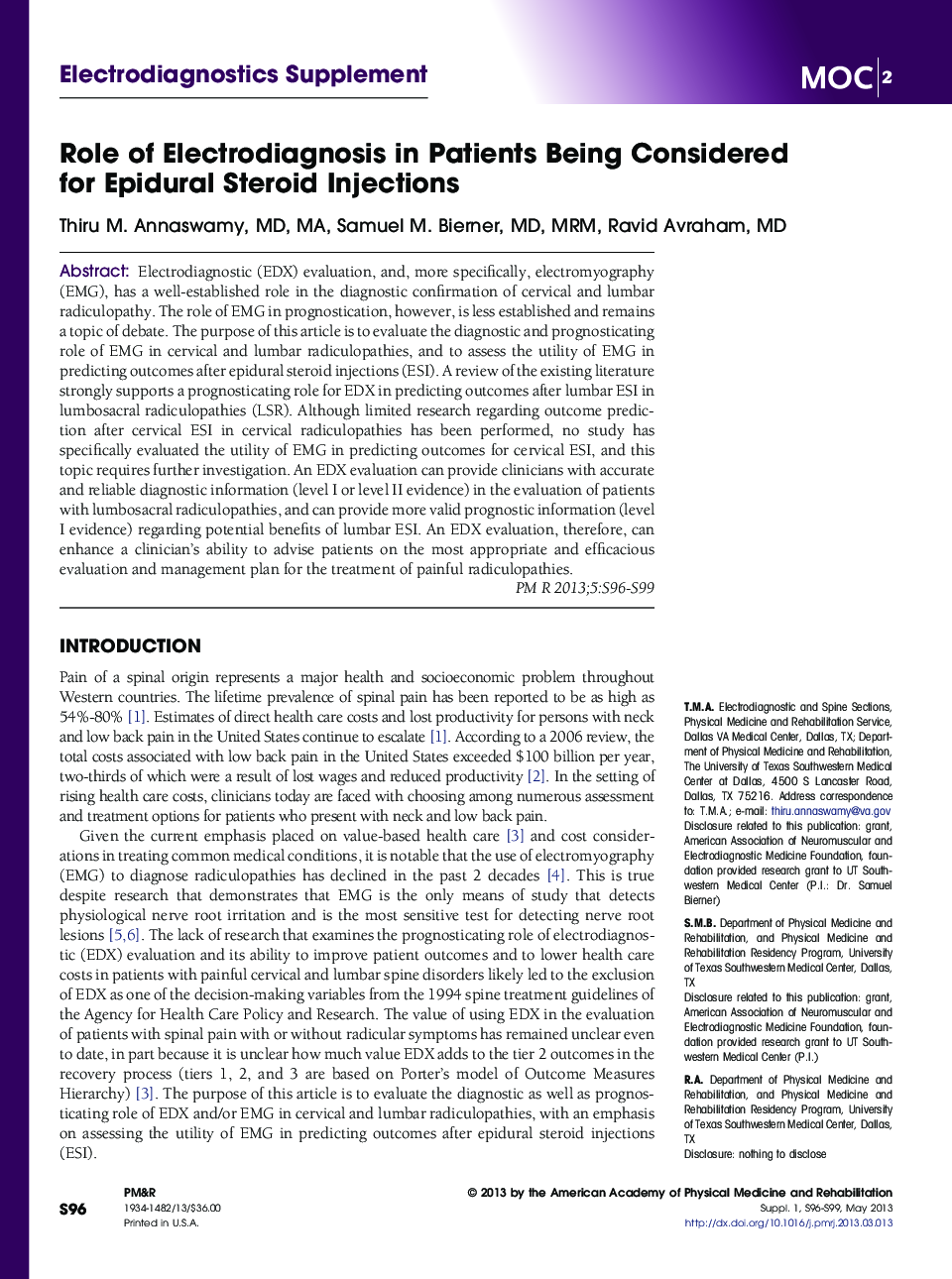| Article ID | Journal | Published Year | Pages | File Type |
|---|---|---|---|---|
| 2705685 | PM&R | 2013 | 4 Pages |
Electrodiagnostic (EDX) evaluation, and, more specifically, electromyography (EMG), has a well-established role in the diagnostic confirmation of cervical and lumbar radiculopathy. The role of EMG in prognostication, however, is less established and remains a topic of debate. The purpose of this article is to evaluate the diagnostic and prognosticating role of EMG in cervical and lumbar radiculopathies, and to assess the utility of EMG in predicting outcomes after epidural steroid injections (ESI). A review of the existing literature strongly supports a prognosticating role for EDX in predicting outcomes after lumbar ESI in lumbosacral radiculopathies (LSR). Although limited research regarding outcome prediction after cervical ESI in cervical radiculopathies has been performed, no study has specifically evaluated the utility of EMG in predicting outcomes for cervical ESI, and this topic requires further investigation. An EDX evaluation can provide clinicians with accurate and reliable diagnostic information (level I or level II evidence) in the evaluation of patients with lumbosacral radiculopathies, and can provide more valid prognostic information (level I evidence) regarding potential benefits of lumbar ESI. An EDX evaluation, therefore, can enhance a clinician's ability to advise patients on the most appropriate and efficacious evaluation and management plan for the treatment of painful radiculopathies.
